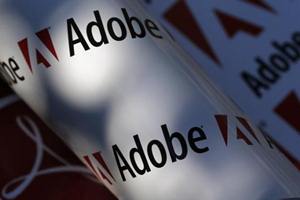It’s been four years since San Jose, California-based Adobe Systems introduced the Creative Cloud (CC) to its portfolio. Now as the world has gone digitally mobile, Adobe has come out with a digital price index. Also as people use multiple devices – mobile phone, tablet, desktop – before they decide on an online purchase, it has become all that more difficult to identify where the decision to make the purchase was made. That’s where Adobe’s Device Coop comes into play. Umang Bedi, managing director -South Asia, Adobe Systems India spoke to FEs Anup Jayaram on all this and more. Excerpts:
Could you tell us about the Adobe digital price index?
The index focuses solely on online purchases. It gives me contextual information of what is going on in the market. While the index has been released in the US, the beauty is that we work with all the leading e-commerce players in the country. We got the data. We just got to start thinking about how we can amalgamate it and extrapolate those indices for the country. Yes, we have the ability to do that because we work with the partners. We have not done it yet in India, but we would love to do it.
How do you see the Digital India programme playing out?
We see Digital India as a framework. It has not started in terms of projects yet. The 3-4 projects that we are seeing getting thrusted out are around smart cities. We are looking at how to build the digital analytics for the smart city tenders. Then there is what the government is calling the mother of all apps Umang – Unified Mobile Application for New Age Governance. They are looking for partners to build this motherhood app that will give them acces to 200 central and state departments. We are looking at how we could partner with that.
How is the creative cloud panning out?
Creative cloud was the biggest gift that we could give to the Indian market, our India business and our corporation globally. We were then the only company that shut down its cash cow perpetual licensing business. When we did this, our EPS fell in the first year by 70%. Suddenly we sold a tonne of more units, but at a much lower price point. So the immediate revenue came down, but our stock price rose. From the market side, we were continuously able to acquire subscribers. In two years and nine months we hit the 6 million new subscribers’ target. As we were adding subscribers, we were also renewing subscribers. That creates a stacking effect on revenues. In 2015, we declared $4.8 billion in revenues. Content was exploding all over the web. Our business was not growing and we were refreshing our software once in 18 months. Designers and developers wanted to use the mobile tablet platform. They wanted us to give them tools for that since we were only desktop centric. That’s what we did. We are the only company in Silicon Valley that literally flying the plane has changed its engines mid-flight. It takes a lot of courage to stop a cash cow perpetual software business running at a gross margin of profitability of 50 points.
How are you plugging into the mobile ecosystem?
Today 45% of all transactions that we are measuring – 41 trillion across the globe – are coming from mobile. Our entire analytics platform is being tailored to build and support mobile experience, advertising and attribution. We have built big innovations around on our analytics platform. Our entire experience management platform has been rejigged with the AEM (Adobe Experience Manager) mobile apps. That’s a big innovation that we are driving on the mobile side. In India we are seeing campaign management become a big area wherein we contextually try to solve for campaigns targeted at not only SMS but a lot of in-app notification, textual stuff that is happening within the app personalized for the user.

